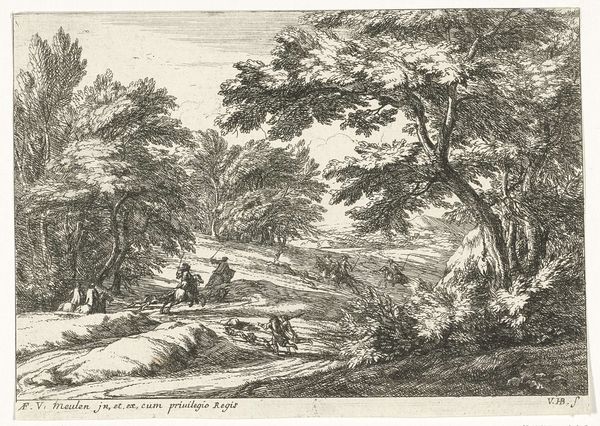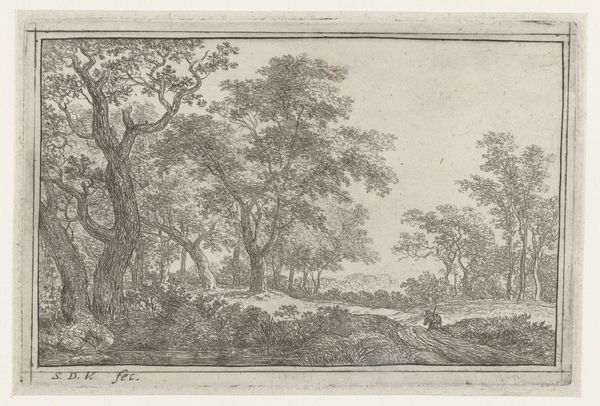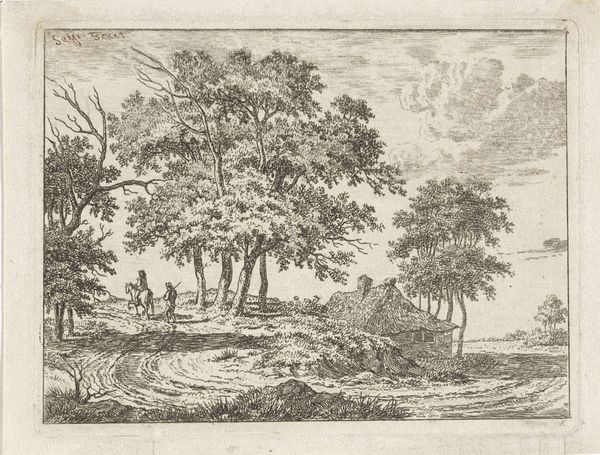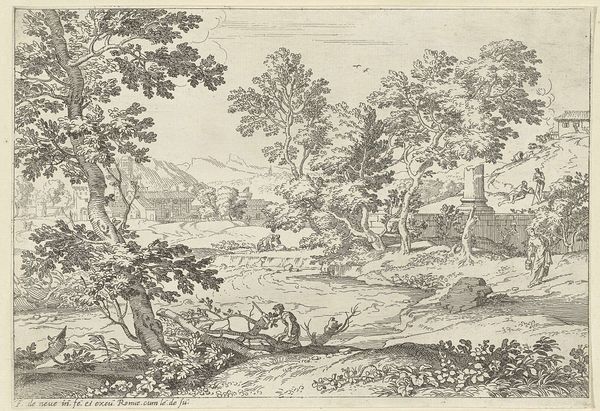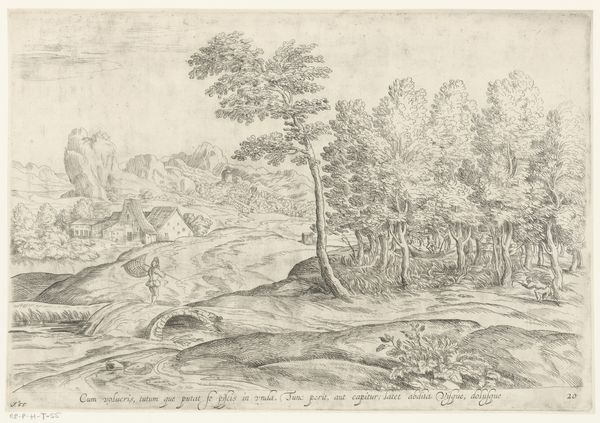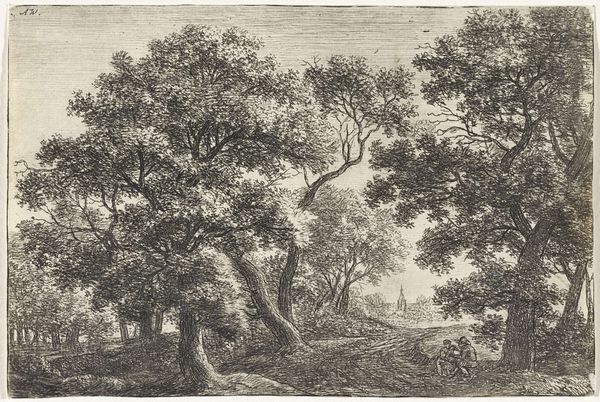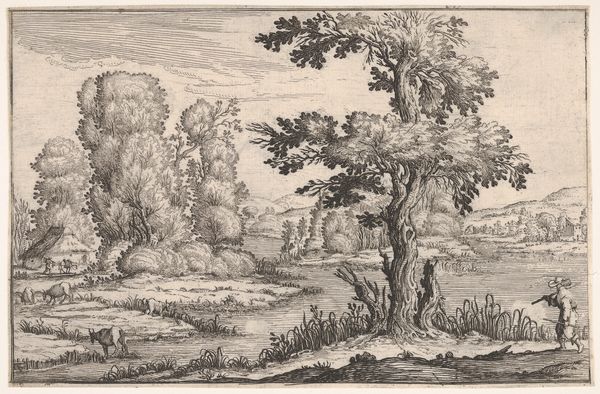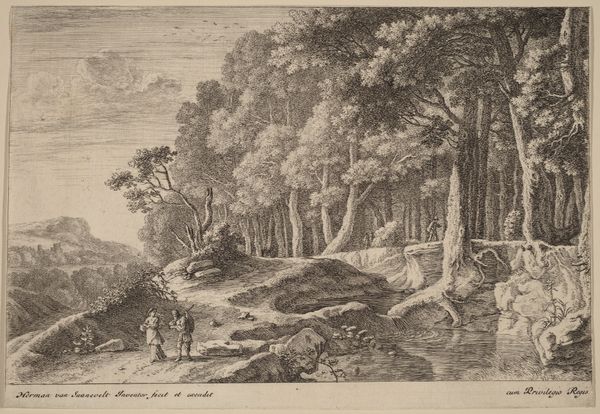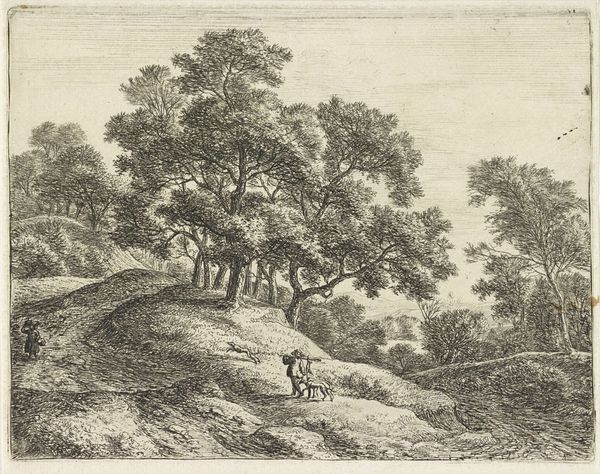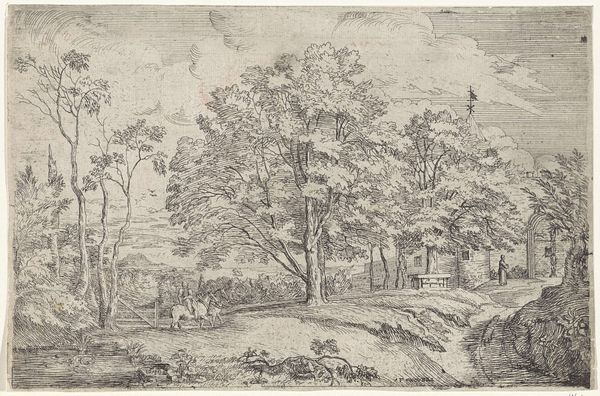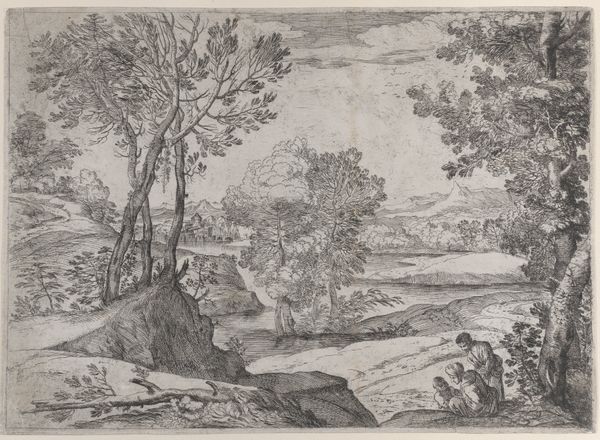
drawing, pencil
#
pencil drawn
#
drawing
#
dutch-golden-age
#
pencil sketch
#
landscape
#
figuration
#
pencil drawing
#
pencil
#
line
#
realism
Dimensions: height 88 mm, width 129 mm
Copyright: Rijks Museum: Open Domain
Editor: Here we have "Landscape with Two Hunters" by Philips Augustijn Immenraet, dating from 1637 to 1679. It’s a pencil drawing, full of detailed textures. It gives off a somewhat somber mood despite being a landscape. What stands out to you when you look at it? Curator: Immediately, the stark contrast between the wild, overgrown foreground and the distant, almost ethereal city calls to me. Think about what ‘landscape’ represented in the Dutch Golden Age. It wasn’t just about pretty scenery. The land was deeply intertwined with their identity. Do you see how the hunters, seemingly small, almost blend into the environment? Editor: Yes, they seem almost secondary to the landscape itself. Curator: Exactly. This diminishing of human presence suggests a cultural memory, perhaps of earlier times where man was subject to nature’s whims, nature and man as opposing forces. The drawing almost feels like an allegory. The rough sketch of the foreground hints at transience, mortality...while that distant city offers stability, progress. The birds could also suggest freedom, an escape from earthly burdens, almost acting as symbols. Editor: That's fascinating. I hadn't considered the symbolic weight of each element. I focused on the simple composition but now can sense the broader implications! Curator: It shows us how symbols operate in time and how they acquire significance. Even these simple forms resonate with history, anthropology, and our very humanity. Editor: It really does bring history to life when you consider the potential embedded symbolism and intent of the piece!
Comments
No comments
Be the first to comment and join the conversation on the ultimate creative platform.


